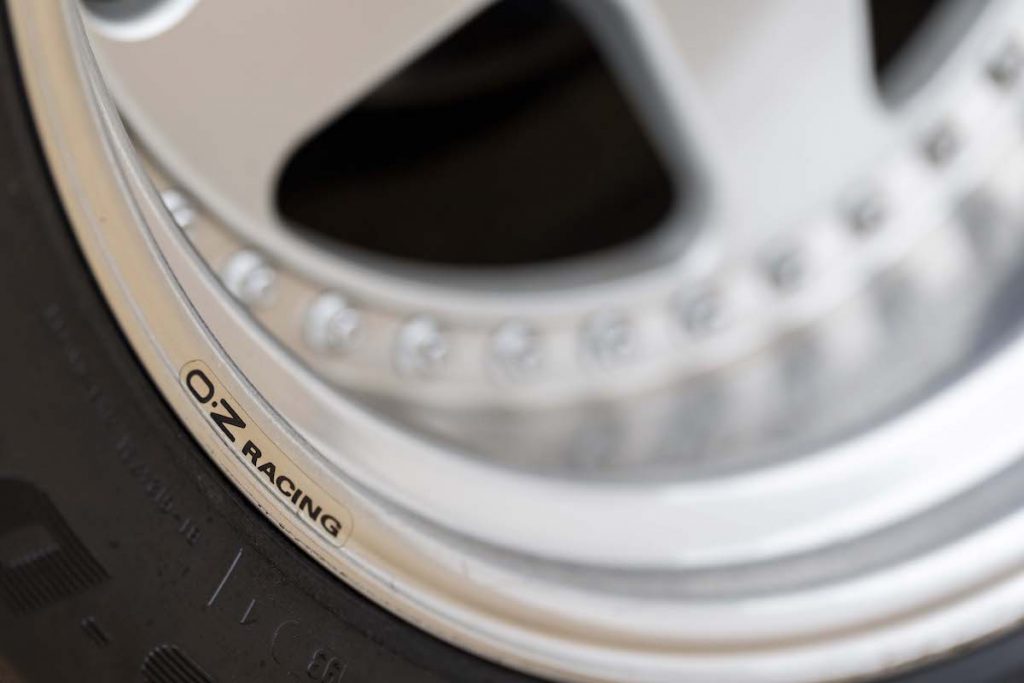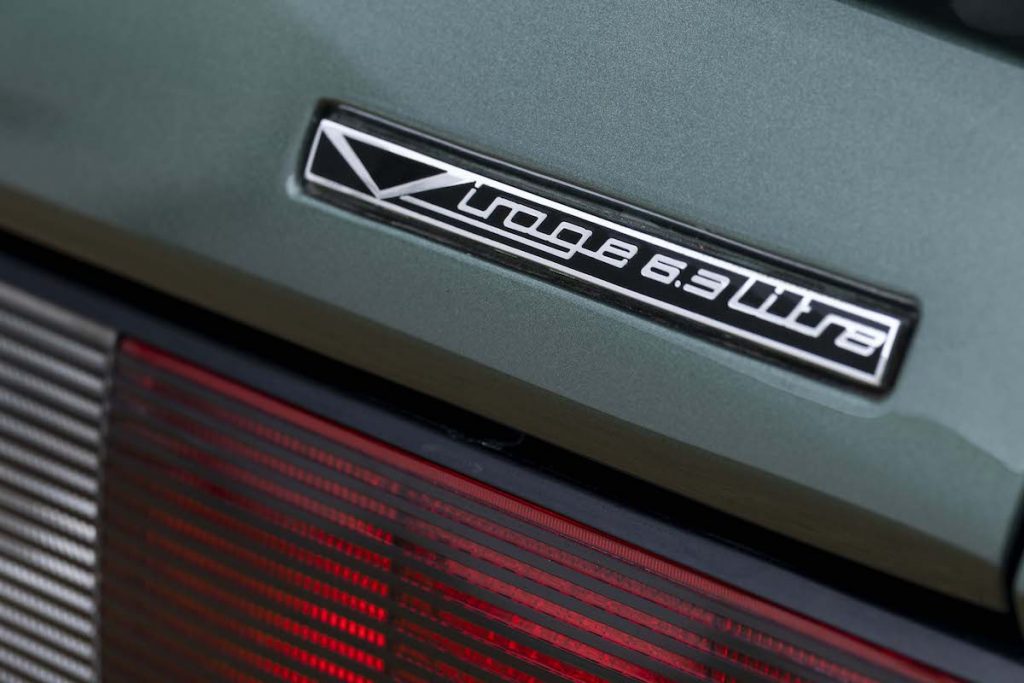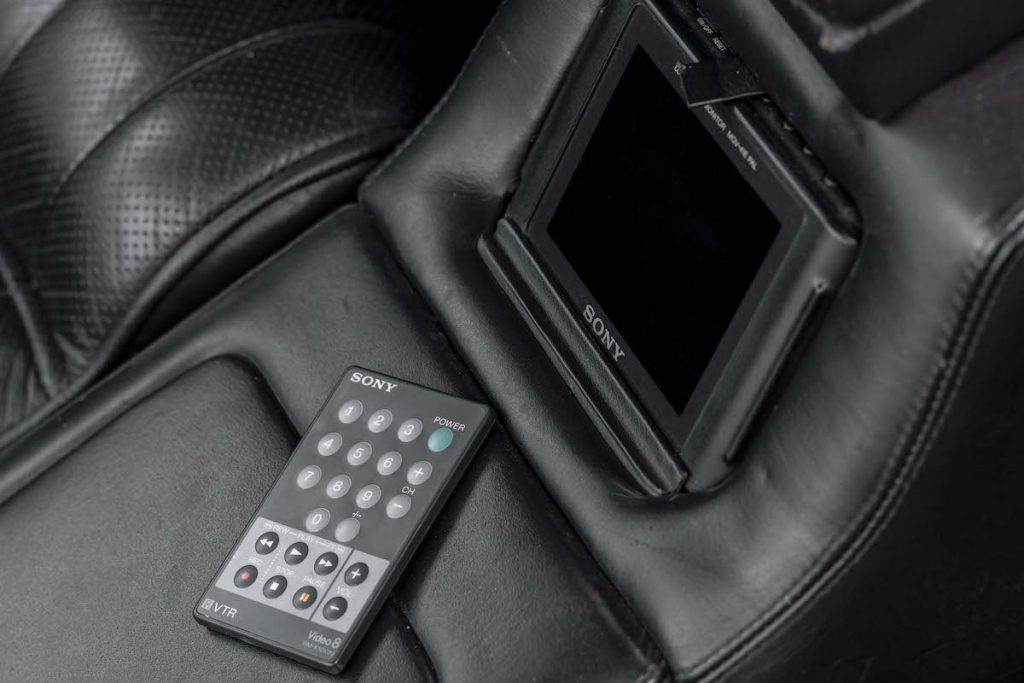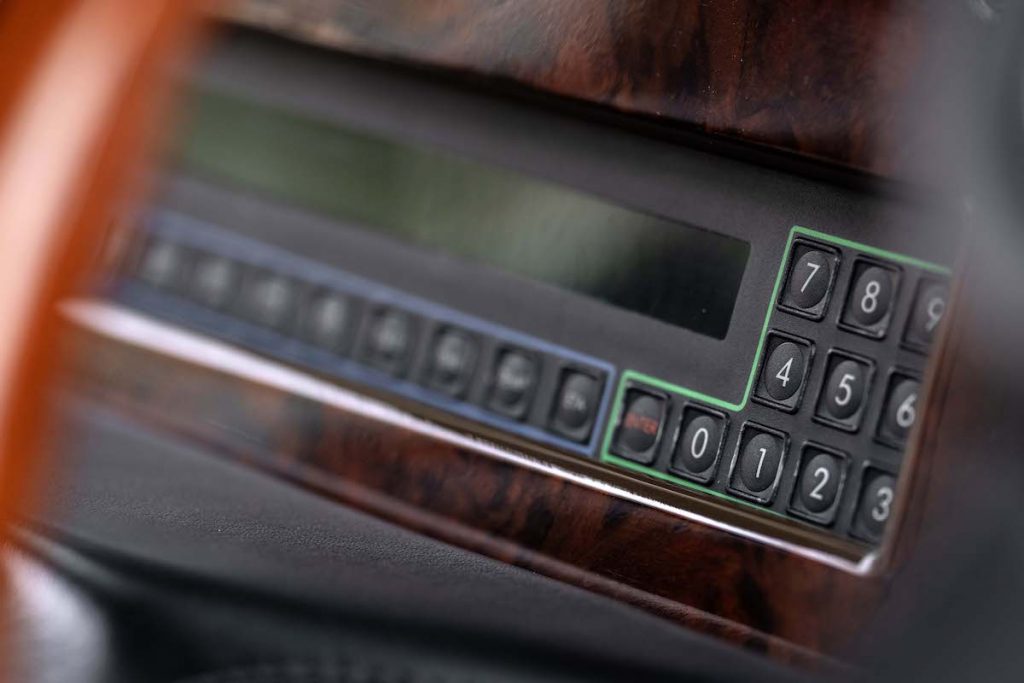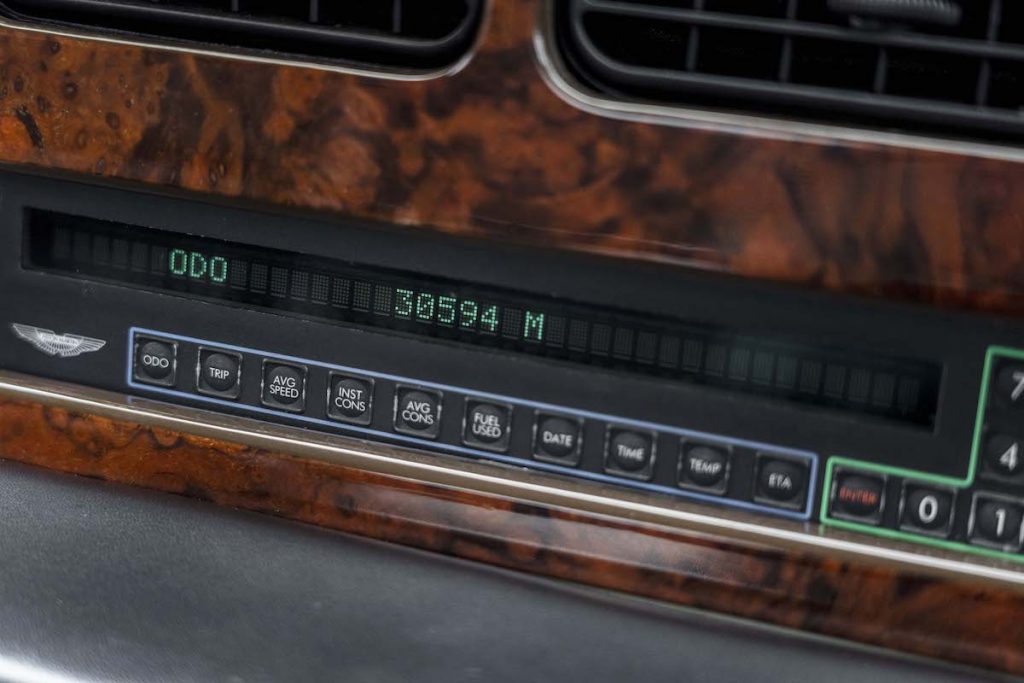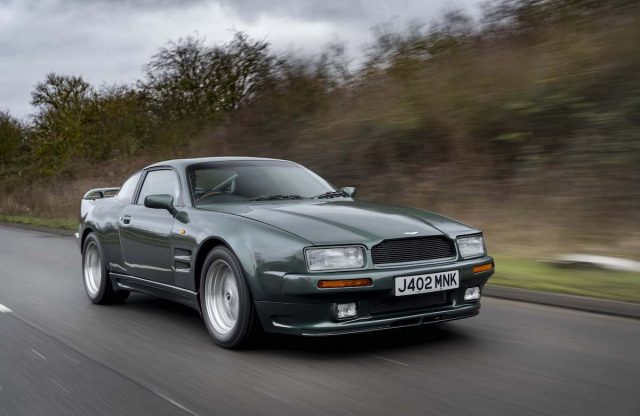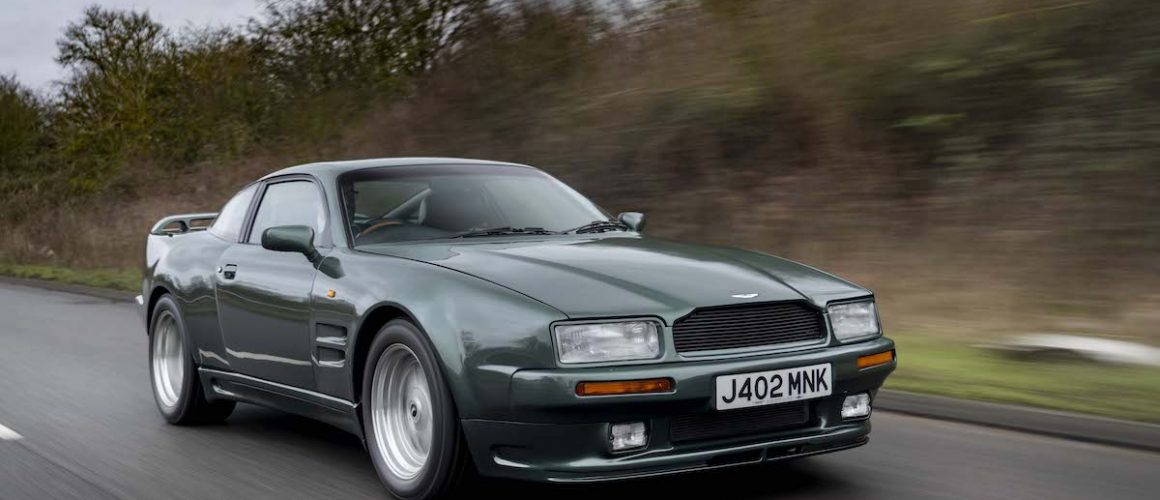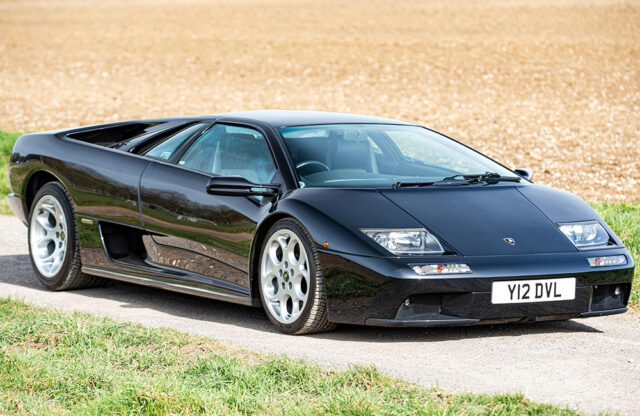WORDS: ELLIOTT HUGHES | PHOTOGRAPHY: ASTON MARTIN WORKS
Aston Martin Works is marking the 30-year anniversary of the Virage and Virage Volante 6.3-litre conversion, which were some of the last models to emerge from the gates of the marque’s historic Newport Pagnell headquarters.
The standard Virage was released in 1989 to critical acclaim at a challenging time for Aston Martin. Not only was the model born in a time of economic turmoil, it was also burdened with being the first all-new model to wear Aston’s iconic Wings badge in over 20 years.
Two years later, the success of the 1989 car was followed by the launch of the Virage 6.3-litre conversion upgrade in the spring of 1992. The upgrade package was made available by the brand’s Customer Service Division – known today as Aston Martin Works.
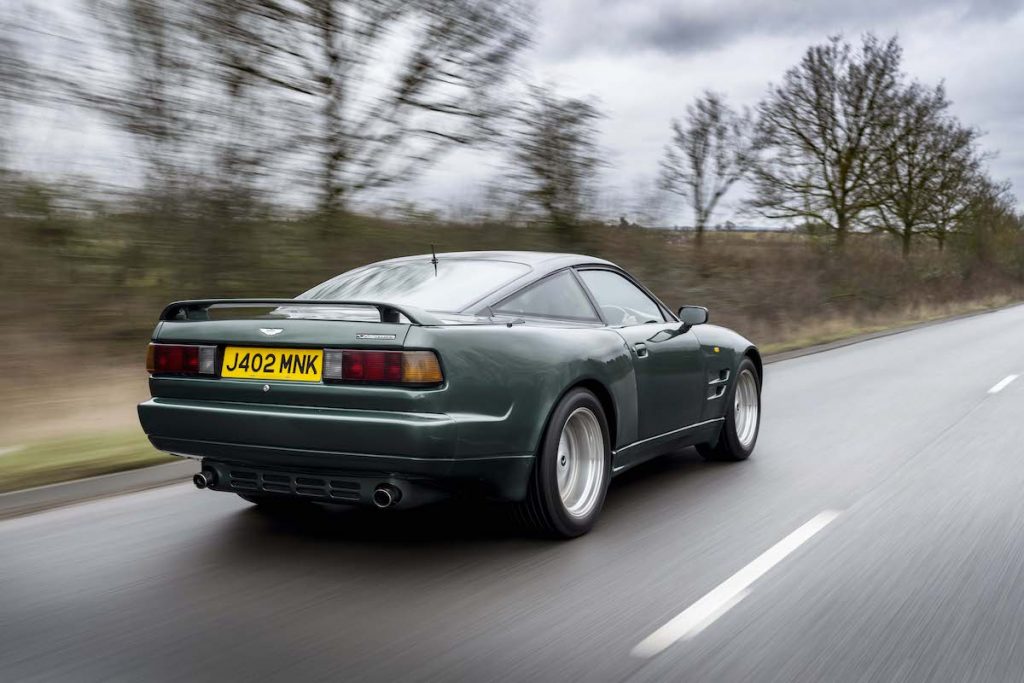
The 6.3-litre conversion significantly increased the 5.3-litre displacement of the original Virage V8, which meant the car’s performance was boosted from around 330bhp at 5300rpm to 500bhp at 6000rpm; an incredibly impressive figure for the era, which made the Virage one of the most potent road cars available.
Naturally, Virage models graced with the 6.3-litre conversion boasted acceleration and top-speed figures that matched its meaty power figures: 0-62mph could be breached in just 5.1 seconds and the car topped out at 174mph.
“This ingenious offering created by the brand’s Customer Service Division – now Aston Martin Works – not only generated a huge amount of positive media interest in the marque, but also provided many of our well heeled customers with the opportunity to acquire an iconic road car with real motor sport heritage,” says Aston Martin historian Steve Waddingham.
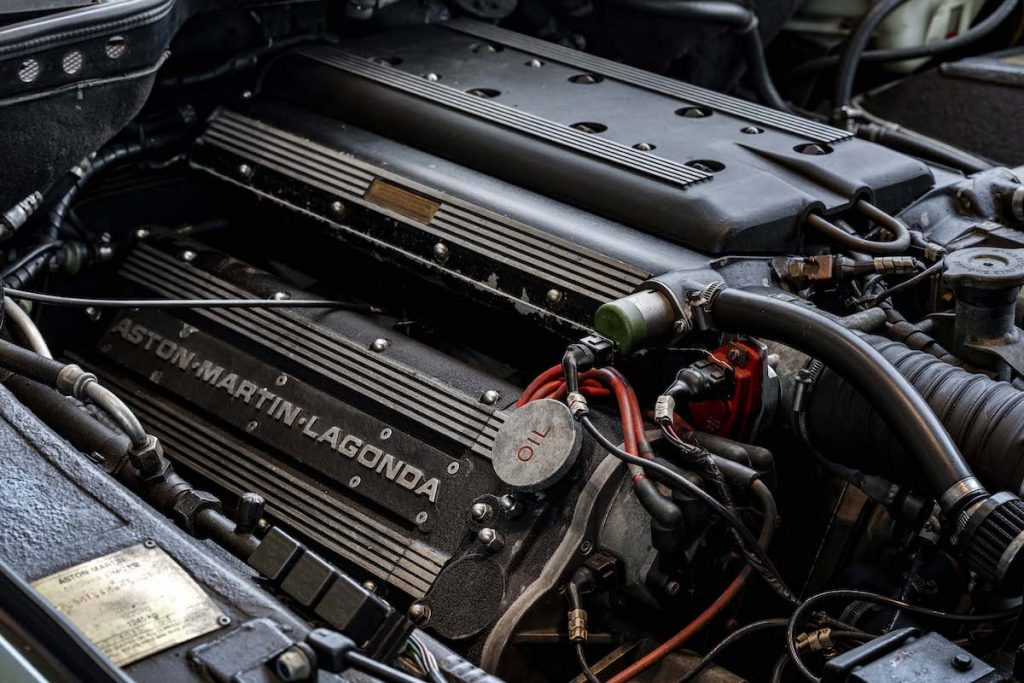
Aston Martin Works achieved the dramatic uptick in the V8’s power output without resorting to forced induction – much to purists’ delight. Instead, the resurgent Aston Martin motor sport division’s engineering knowledge and experience were employed with the introduction of Cosworth racing pistons, a lightweight crankshaft, modified cylinder heads and new inlet camshafts. These components were complemented with Weber/Alpha fuel injection, an ECU remap and performance catalysts.
6.3-litre conversion-equipped cars’ suspension and braking components also underwent an overhaul to better cope with the Virage’s new-found performance. Handling was sharpened with a combination of newly designed rose joints, uprated springs, bespoke dampers, a larger front anti-roll bar and the installation of an anti-roll bar at the rear. The suspension geometry was revised to hone the new motor sport-inspired parts, along with improved steering-rack mountings for improved driver feedback and feel.
Five-spoke 18-inch OZ alloy wheels wrapped in sticky Goodyear Eagle tyres shrouded ventilated cross-drilled rotors mated to four-piston brake calipers that ensured Virage 6.3-litre conversion cars stopped as effectively as they accelerated.
It wasn’t just the mechanical componentry that Aston Martin Works focused its efforts on for the 6.3-litre conversion; there were several notable styling updates, too. The most obvious of these were the muscular flared wheelarches hand-crafted from aluminium to accommodate the larger wheels and brakes. The swollen arches were accompanied by extended sills, a deeper front air dam, an extended rear valance and a boot spoiler.
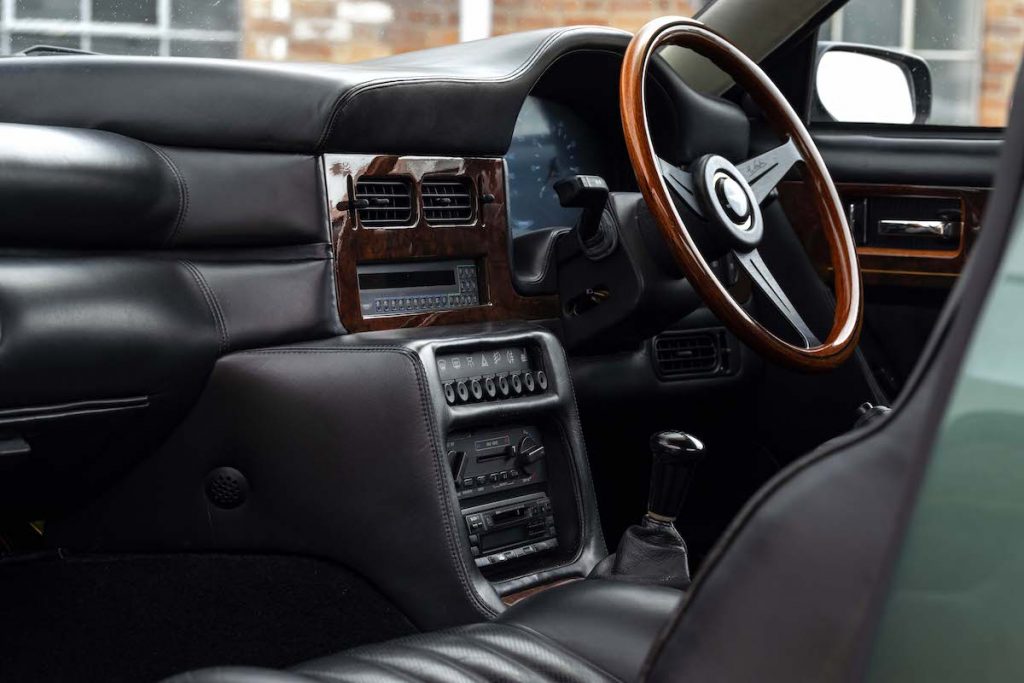
Despite the performance-oriented overhaul, 6.3-litre conversion models retained the luxurious ambience of the Virage cabin exemplified by plush Conolly leather. The 6.3-litre conversion also provided the opportunity for tech options that were cutting edge for the time, such as a mini-disc player and televisions mounted in the front headrest for rear passengers.
It is believed that Aston Martin created 60 6.3-litre conversions over the course of just two years, selling 46 in 1992.
Paul Spires, president of Aston Martin Works, was personally involved in the Virage 6.3-litre conversion project, and recalls driving ‘Minky’, the development and demonstration vehicle.
He summarised the 6.3-litre conversion’s importance to the marque on its 30th anniversary by saying:
“The Virage 6.3 conversion was, and remains, a superb example of the capabilities of the department that is now Aston Martin Works.
“The car was comprehensively re-engineered, and restyled, right here in Newport Pagnell. It remains a true testament to the ingenuity and vision of the Aston Martin business, and I’m thrilled – but also a little shocked from a personal point of view – that we are able to celebrate its 30th anniversary in 2022.”
